Asthma
How to submit an article:
- Registered users can submit any published journal article that has a unique DOI (Digital Object Identifier) name or link to Research Hub.
- For example, you can paste the full DOI link:
https://doi.org/10.1109/5.771073or just the DOI name:10.1109/5.771073into the field above and click submit. - The person who is first to submit a valid article to Research Hub will forever be credited for it, and every article submission earns you +6 Research Points.
Related Topics
Published research studies are articles that present the findings of original research that has undergone a peer-review process and has been made publicly available in scholarly journals, books or other media.
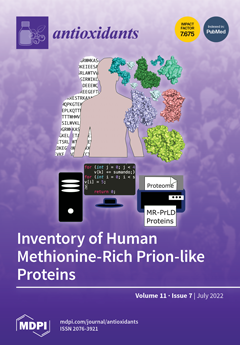
Adenophora Stricta Root Extract Alleviates Airway Inflammation in Mice with Ovalbumin-Induced Allergic Asthma
2023 Apr 13 Antioxidants Jung CJ, Park SM, Lee DG, Yu YE, Ku TH, La IJ, et al.
The present results clearly showed that Adenophora stricta root extract (AsE) can protect the lung from allergic asthma by reducing the infiltration of inflammatory cells, as well as the production of T helper 2 lymphocyte-dependent cytokines. If several remaining issues are appropriately addressed in the future, AsE will be a promising nutraceutical for protecting the lungs by managing airway inflammation.
Network Pharmacology Animal Study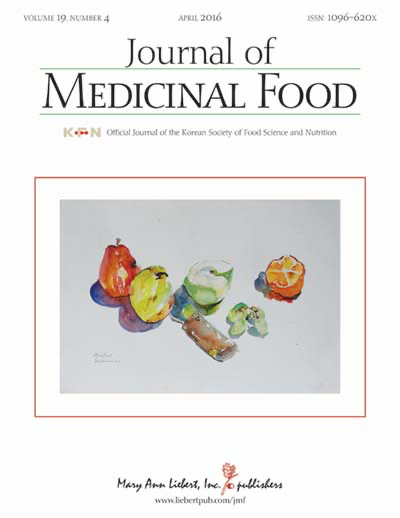
Effects of Pear Extracts on Microbiome and Immunocytokines to Alleviate Air Pollution-Related Respiratory Hypersensitivity
2023 Mar 01 Journal of Medicinal Food Yang M, Lee U, Cho HR, Lee KB, Shin YJ, Bae MJ, et al.
Randomised Controlled Trial Air Pollution Asthma Gut Microbiota PearKorean pear extracts appear to alleviate air pollution-related respiratory hypersensitivity by modulating beneficial gut microflora and suppressing pro-inflammatory cytokines.
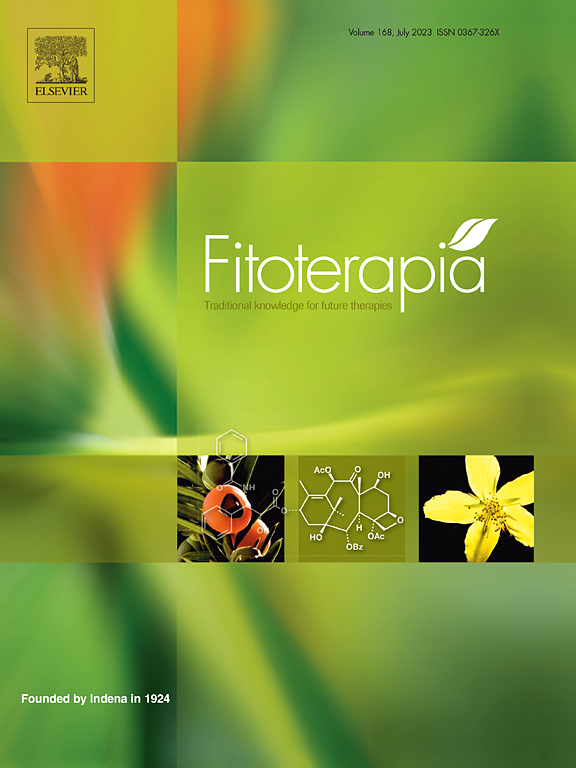
Advances in the chemical constituents, pharmacological properties and clinical applications of TCM formula Yupingfeng San
2023 Jan Fitoterapia Bai Y, Wei W, Yao C, Wu S, Wang W, Guo D
The potential bioactive constituents of this formula could be classified as polysaccharides, flavonoids, and saponins. The findings indicated that YPFS is a safe and effective therapeutic Chinese formula against various diseases, including immunological diseases, inflammations, tumors and pulmonary diseases, but only a few relevant randomized, double-blind, placebo-control, and multi-center clinical trials were reported.
Review Article Yu Ping Feng San
Does pomegranate extract supplementation improve the clinical symptoms of patients with allergic asthma? A double-blind, randomized, placebo-controlled trial
2023 Jan 25 Frontiers in Pharmacology Hosseini SA, Shateri Z, Abolnezhadian F, Maraghi E, Haddadzadeh Shoushtari M, Zilaee M
Randomised Controlled Trial AsthmaPomegranate extract supplements can help improve clinical symptoms and lower blood cell counts associated with inflammation in patients with allergic asthma.

The Effectiveness and Safety of Huangqi Xixin Decoction for Cough Variant Asthma: A Systematic Review and Meta-Analysis
2022 Sep 20 Evidence-Based Complementary and Alternative Medicine Wang C, Xia Q, Hu B, Jiang W, Zhang H
Systematic Review Meta-Analysis Cough Asthma Huangqi Xixin decoction Huang Qi Xi XinHuoXiang ZhengQi (HQXXD) may be a safe and effective treatment for Chronic Cough Variant Asthma (CVA), improving clinical efficacy and airway responsiveness while reducing recurrence rates.
Research insights are moderated by the Research Hub team and offer an at-a-glance overview of interesting research findings.

2023 Journal of Medicinal Food
Korean pear extracts appear to alleviate air pollution-related respiratory hypersensitivity by modulating beneficial gut microflora and suppressing pro-inflammatory cytokines.
Randomised Controlled Trial Air Pollution Gut Microbiota Pear
Effects of Pear Extracts on Microbiome and Immunocytokines to Alleviate Air Pollution-Related Respiratory Hypersensitivity
Yang M, Lee U, Cho HR, Lee KB, Shin YJ, Bae MJ, et al.

2023 Frontiers in Pharmacology
Pomegranate extract supplements can help improve clinical symptoms and lower blood cell counts associated with inflammation in patients with allergic asthma.
Randomised Controlled Trial
Does pomegranate extract supplementation improve the clinical symptoms of patients with allergic asthma? A double-blind, randomized, placebo-controlled trial
Hosseini SA, Shateri Z, Abolnezhadian F, Maraghi E, Haddadzadeh Shoushtari M, Zilaee M

2022 Evidence-Based Complementary and Alternative Medicine
HuoXiang ZhengQi (HQXXD) may be a safe and effective treatment for Chronic Cough Variant Asthma (CVA), improving clinical efficacy and airway responsiveness while reducing recurrence rates.
Systematic Review Cough Huang Qi Huangqi Xixin decoction Xi Xin
The Effectiveness and Safety of Huangqi Xixin Decoction for Cough Variant Asthma: A Systematic Review and Meta-Analysis
Wang C, Xia Q, Hu B, Jiang W, Zhang H
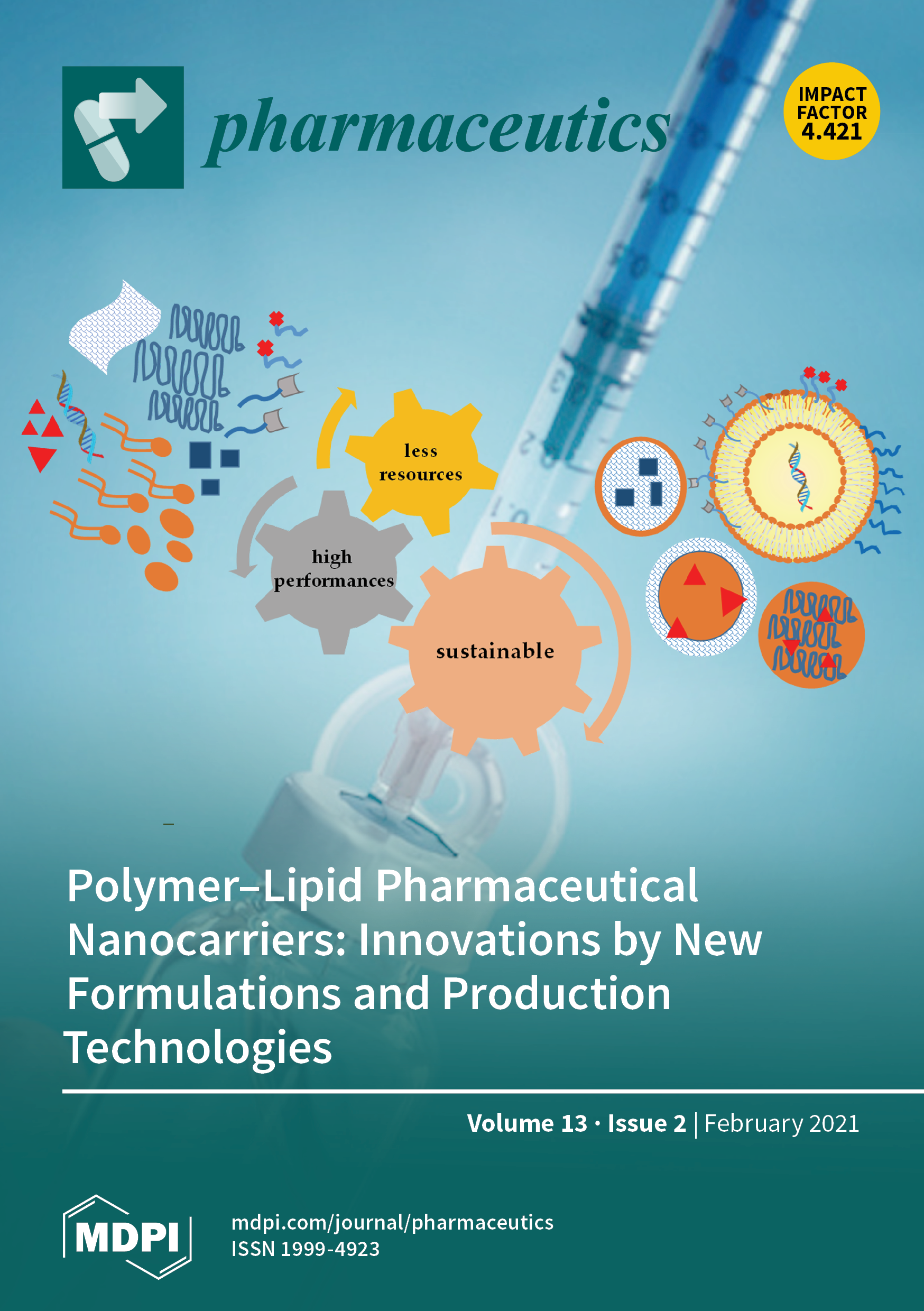
2022 Pharmaceutics
Asthma severity can be notably reduced by Xi Xin essential oil, which decreases inflammation, immunoglobulins, and fibrotic mediators, while also alleviating airway obstruction.
Network Pharmacology Xi Xin
Exploring the Potential Effects and Mechanisms of Asarum sieboldii Radix Essential Oil for Treatment of Asthma
Han JM, Kim MH, Choi LY, Kim G, Yang WM

2021 Frontiers in Pharmacology
The autophagic-regulatory effects of Chinese herbal medicine are potentially therapeutic for allergic inflammatory diseases such as asthma.
Review Article
Autophagy Modulators From Chinese Herbal Medicines: Mechanisms and Therapeutic Potentials for Asthma
Zhang Yun, Wang Xing, Zhang He, Tang Hongmei, Hu Hang, Wang Songping, et al.
Review Articles
Review articles summarise and critically evaluate the current state of research on a specific topic or field by synthesising multiple primary research studies.

Advances in the chemical constituents, pharmacological properties and clinical applications of TCM formula Yupingfeng San
2023 Jan Fitoterapia Bai Y, Wei W, Yao C, Wu S, Wang W, Guo D
The potential bioactive constituents of this formula could be classified as polysaccharides, flavonoids, and saponins. The findings indicated that YPFS is a safe and effective therapeutic Chinese formula against various diseases, including immunological diseases, inflammations, tumors and pulmonary diseases, but only a few relevant randomized, double-blind, placebo-control, and multi-center clinical trials were reported.
Review Article Yu Ping Feng San
The Effectiveness and Safety of Huangqi Xixin Decoction for Cough Variant Asthma: A Systematic Review and Meta-Analysis
2022 Sep 20 Evidence-Based Complementary and Alternative Medicine Wang C, Xia Q, Hu B, Jiang W, Zhang H
Systematic Review Meta-Analysis Cough Asthma Huangqi Xixin decoction Huang Qi Xi XinHuoXiang ZhengQi (HQXXD) may be a safe and effective treatment for Chronic Cough Variant Asthma (CVA), improving clinical efficacy and airway responsiveness while reducing recurrence rates.

Autophagy Modulators From Chinese Herbal Medicines: Mechanisms and Therapeutic Potentials for Asthma
2021 Jul 23 Frontiers in Pharmacology Zhang Yun, Wang Xing, Zhang He, Tang Hongmei, Hu Hang, Wang Songping, et al.
Review ArticleThe autophagic-regulatory effects of Chinese herbal medicine are potentially therapeutic for allergic inflammatory diseases such as asthma.
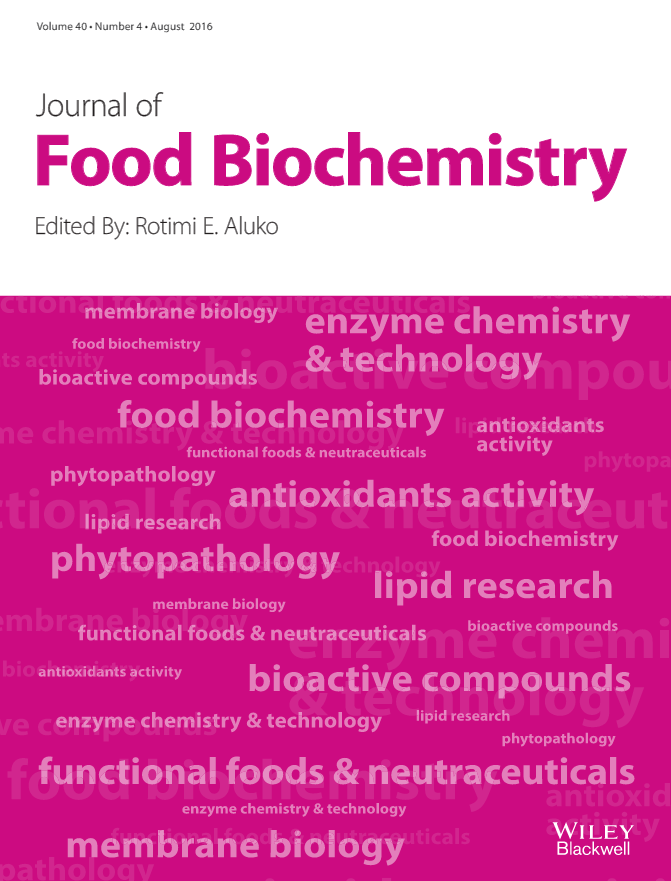
Therapeutic properties of Punica granatum L (pomegranate) and its applications in lung‐based diseases: A detailed review
2021 Mar 12 Journal of Food Biochemistry Shaikh SB, Bhandary YP
Review Article COPDPomegranate demonstrates anti-proliferative, anti-oxidant, anti-inflammatory properties that can effectively control the progression of various respiratory diseases.
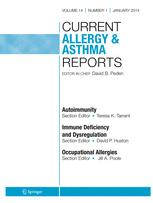
Traditional Chinese Medicine (TCM) and Allergic Diseases
2020 Sep 02 Current Allergy and Asthma Reports Chan HHL, Ng T
Review Article Hay FeverTraditional Chinese Medicine, specifically acupuncture, demonstrates promising effects in managing allergic diseases like allergic rhinitis and asthma.
Clinical Trials
Clinical trials are research studies that involve people and are conducted to evaluate the safety and efficacy of new treatments or interventions, such as drugs, medical devices, or behavioural therapies.

Effects of Pear Extracts on Microbiome and Immunocytokines to Alleviate Air Pollution-Related Respiratory Hypersensitivity
2023 Mar 01 Journal of Medicinal Food Yang M, Lee U, Cho HR, Lee KB, Shin YJ, Bae MJ, et al.
Randomised Controlled Trial Air Pollution Asthma Gut Microbiota PearKorean pear extracts appear to alleviate air pollution-related respiratory hypersensitivity by modulating beneficial gut microflora and suppressing pro-inflammatory cytokines.

Does pomegranate extract supplementation improve the clinical symptoms of patients with allergic asthma? A double-blind, randomized, placebo-controlled trial
2023 Jan 25 Frontiers in Pharmacology Hosseini SA, Shateri Z, Abolnezhadian F, Maraghi E, Haddadzadeh Shoushtari M, Zilaee M
Randomised Controlled Trial AsthmaPomegranate extract supplements can help improve clinical symptoms and lower blood cell counts associated with inflammation in patients with allergic asthma.

The Effect of Compound Honey Syrup on Clinical Manifestation of the Adult Asthma Patients: A Randomized, Double-Blinded, Placebo-Controlled Clinical Trial
2022 Jun 29 Traditional and Integrative Medicine Kaveh S, Kaveh N, Agin K, Sadr S, Choopani R, Karimi Rouzbahani A
Compound honey syrup, when used alongside classic asthma treatment, significantly decreased asthma symptoms such as night symptoms, morning symptoms, activity limitation, shortness of breath, wheezing, and use of Short Acting Beta Agonist (SABA). The intervention group showed greater improvement compared to the control group, suggesting that compound honey syrup can be a safe and effective adjunctive treatment for adult asthma.
Randomised Controlled TrialStudy Protocols
Published study protocols are detailed plans that outline the objectives, methodology, statistical analyses, and organisation of a research study that have been made publicly available for others to review and use as a reference.
Presentation Slides

Randomised Controlled Trial
Korean pear extracts appear to alleviate air pollution-related respiratory hypersensitivity by modulating beneficial gut microflora and suppressing pro-inflammatory cytokines.
Yang M, Lee U, Cho HR, Lee KB, Shin YJ, Bae MJ, Park KY

Randomised Controlled Trial
Pomegranate extract supplements can help improve clinical symptoms and lower blood cell counts associated with inflammation in patients with allergic asthma.
Hosseini SA, Shateri Z, Abolnezhadian F, Maraghi E, Haddadzadeh Shoushtari M, Zilaee M

Systematic Review
HuoXiang ZhengQi (HQXXD) may be a safe and effective treatment for Chronic Cough Variant Asthma (CVA), improving clinical efficacy and airway responsiveness while reducing recurrence rates.
Wang C, Xia Q, Hu B, Jiang W, Zhang H

Network Pharmacology
Asthma severity can be notably reduced by Xi Xin essential oil, which decreases inflammation, immunoglobulins, and fibrotic mediators, while also alleviating airway obstruction.
Han JM, Kim MH, Choi LY, Kim G, Yang WM

Review Article
The autophagic-regulatory effects of Chinese herbal medicine are potentially therapeutic for allergic inflammatory diseases such as asthma.
Zhang Yun, Wang Xing, Zhang He, Tang Hongmei, Hu Hang, Wang Songping, Wong Vincent Kam Wai, Li Yuying, Deng Jun

Clinical Study
Jia Wei Yu Ping Feng San, a traditional Chinese medicine, alleviates allergic asthma by reducing airway inflammation, mediated by suppressing group 2 innate lymphoid cells.
Xue L, Li C, Ge G, Zhang S, Tian L, Wang Y, Zhang H, Ma Z and Lu Z

Meta-Analysis
The evidence supports that acupuncture can be considered in the treatment of cough-variant asthma as an adjuvant therapy.
Xiong J, Qi WC, Yang H, Zou ST, Kong J, Wang CL, Zhou YF, Liang FR

Review Article
Pomegranate demonstrates anti-proliferative, anti-oxidant, anti-inflammatory properties that can effectively control the progression of various respiratory diseases.
Shaikh SB, Bhandary YP

Review Article
Traditional Chinese Medicine, specifically acupuncture, demonstrates promising effects in managing allergic diseases like allergic rhinitis and asthma.
Chan HHL, Ng T
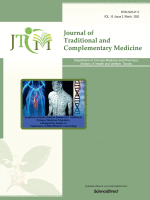
Cohort Study
Chinese herbal medicine usage in children with asthma can reduce their risk of hospitalization.
Lo PC, Lin SK, Lai JN

Meta-Analysis
Consumption of raw milk early in life appears to provide protection against asthma and allergies, regardless of whether children live on farms or in rural, non-farm areas.
Brick T, Hettinga K, Kirchner B, Pfaffl MW, Ege MJ

Animal Study
A traditional Chinese prescription, Yu Ping Feng San, significantly mitigates symptoms in cases of asthma recurrence, outperforming commonly prescribed asthma medications.
Bao K, Yuan W, Zhou Y, Chen Y, Yu X, Wang X, Jia Z, Yu X, Wang X, Yao L, Wang S, Xu Y, Zhang Y, Zheng J and Hong M
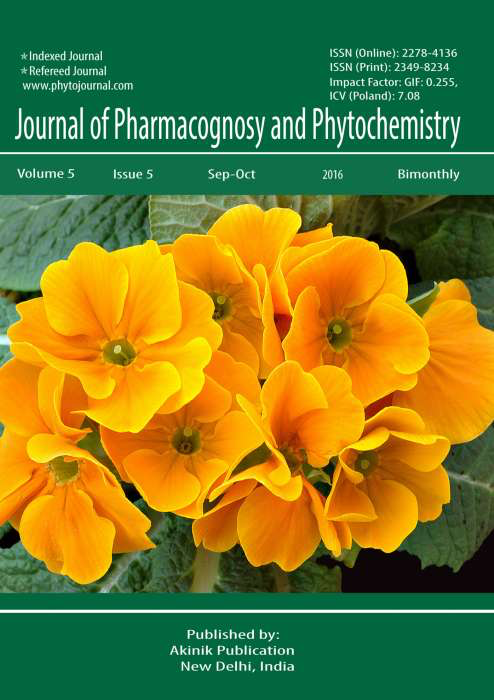
Review Article
Peppermint's extensive applications, especially its antimicrobial and antioxidant features, and potential health benefits can significantly increase its market value in various industries.
Parv Nayak, Tankesh Kumar, AK Gupta and NU Joshi
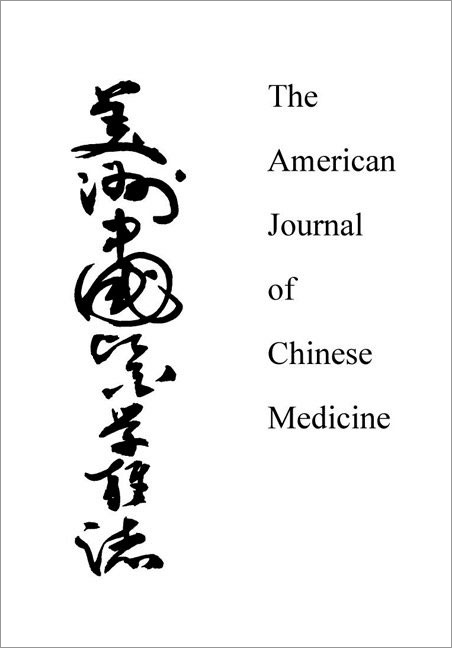
Systematic Review
Chinese medicine treatments involving the Bladder and Conception Vessel meridians may be more effective to relieve asthma symptoms than non-meridian interventions.
Mei-Hua Wang, Chiehfeng Chen, Mei-Ling Yeh and Jaung-Geng Lin
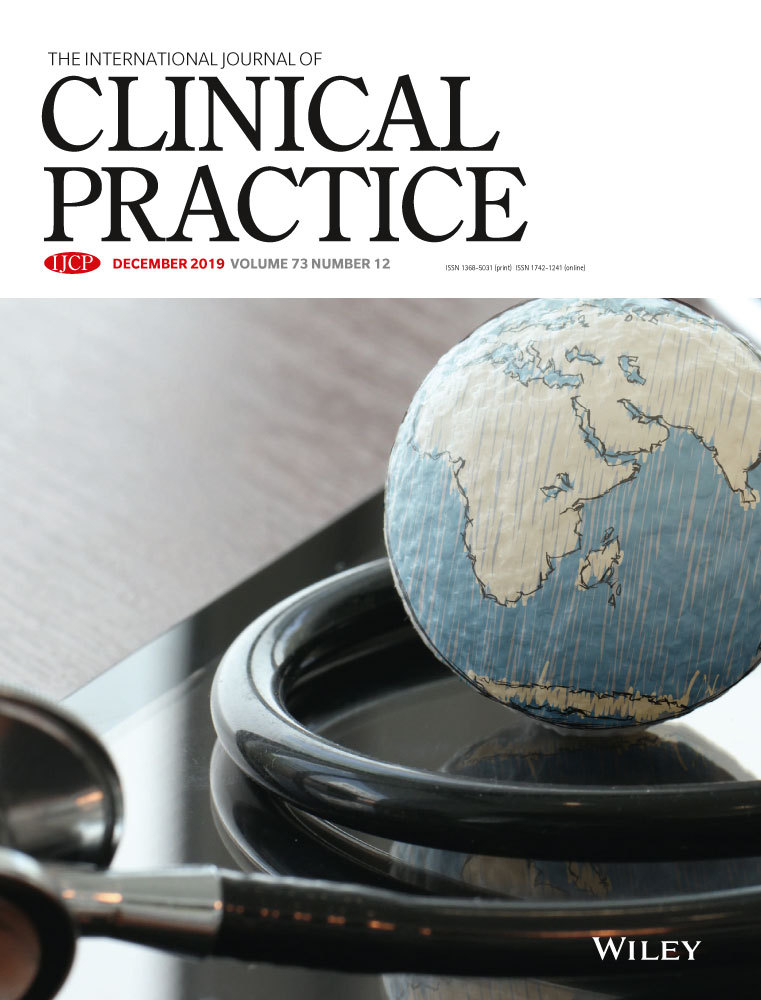
Systematic Review
Certain traditional herbal medicines used in east-Asia as adjuncts to conventional medications improved outcomes in acute and chronic asthma.
Allison Clyne,Angela Wei Hong Yang,Mingdi Li,Yutong Fei,Brian H May

Systematic Review
Acupuncture has some effects on asthma, especially as an adjunctive therapy.
Chunxiang Jiang, Lanlan Jiang, Qingwu Qin
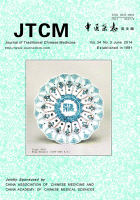
Systematic Review
Stimulating acupoints had positive effects on childhood cough variant asthma and was a relatively safe treatment.
Jin Yutong, Chen Shan, Xuan Lihua

Systematic Review
Traditional Chinese massage therapy can effectively treat asthma and significantly improve pulmonary function in children.
Ji Wu Xi-Wen Yang, and Ming Zhang

Systematic Review
Herbal medicines combined with routine pharmacotherapies improved asthma outcomes greater than pharmacotherapies alone.
Shergis JL, Wu L, Zhang AL, Guo X, Lu C, Xue CC
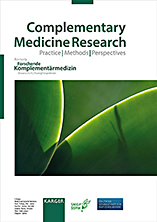
Systematic Review
Acupoint application may be a valid complementary and alternative therapy for asthma in adults.
Su L., Meng L., Chen R., Wu W., Peng B., Man L.
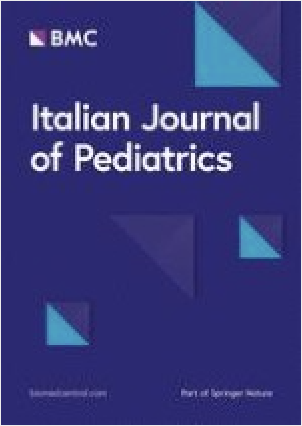
Systematic Review
Acupuncture may have a beneficial effect with respect to peak expiratory flow in children with asthma.
Liu, C.F., Chien, L.W.
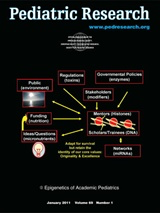
Systematic Review
The efficacy of acupuncture for some pediatric conditions is promising, such as for cerebral palsy, nocturnal enuresis, tic disorders, amblyopia, and pain reduction.
Chunsong Yang, Zilong Hao, Ling-Li Zhang & Qin Guo
Executive Summary
Write an executive summary in the form of a blog article on the topic of "Research into Chinese medicine treatment for Asthma" summarising the research below and using language that can be easily understood by patients and avoiding medical jargon using a professional and caring tone of voice.
Write an executive summary in the form of a blog article on the topic of "Researched Chinese medicine treatments for Asthma" summarising the research below in an objective and easy to understand way, and using language that can be easily understood by patients. Group the article into Chinese medicine treatments first, followed by nutrition and other treatments. Avoid using medical jargon and use a professional and caring tone of voice.
Write me a concise but easy to understand executive summary on the topic of "Chinese medicine treatments for Asthma" based on the following research that I will give you. Your summary should be 2 paragraphs long in Australian English spelling and include references to the studies.
A Randomised Controlled Trial published in 2023 in the journal Journal of Medicinal Food found that Korean pear extracts appear to alleviate air pollution-related respiratory hypersensitivity by modulating beneficial gut microflora and suppressing pro-inflammatory cytokines. In the preclinical and randomized double-blind clinical studies, mild-asthma subjects living in Seoul, Korea were divided into two groups: one receiving a daily treatment of pear extracts for four weeks, and a placebo group. The pear extract was tested for its ability to mitigate respiratory hypersensitivity connected to air pollution. The treatment's effects were evaluated based on the toxicokinetic study of exposure biomarkers for airborne polyaromatic hydrocarbons and levels of pro-inflammatory cytokines in human subjects. In terms of results, it was found that those individuals receiving daily pear extract exhibited decreased levels of exposure biomarkers related to airborne polyaromatic hydrocarbons. Furthermore, the pear extract treatment was associated with a significant increase in populations of fiber-degrading bacteria that boost beneficial gut microflora crucial for immune defense. Additionally, the extracts significantly suppressed the production of various pro-inflammatory cytokines, as per the preclinical tests conducted on asthma-induced mice. Overall, these outcomes suggest a beneficial role of Korean pear extracts in mitigating air pollution-related respiratory hypersensitivity.
A Randomised Controlled Trial published in 2023 in the journal Frontiers in Pharmacology found that Pomegranate extract supplements can help improve clinical symptoms and lower blood cell counts associated with inflammation in patients with allergic asthma. In this study, 64 participants with mild to moderate allergic asthma were randomly divided into two groups: a control group which was given placebo capsules and an intervention group which was given pomegranate extract capsules. The intervention group was administered a dosage of 250 milligrams of pomegranate extract twice daily over a period of eight weeks. The clinical symptoms and blood cell counts of all the participants were measured before starting the intervention and post the completion of it. The results of the study indicated that the group which was given pomegranate extract exhibited considerable improvement in clinical symptoms like shortness of breath and restrictions on activity, as compared to the control group. Additionally, the participants in the intervention group displayed a substantive drop in eosinophil, basophil, and neutrophil counts. Notably, there was a statistically significant difference in the neutrophil and eosinophil levels between the two groups, which suggests that pomegranate extract supplementation might have potential therapeutic benefits for asthma patients.
A Systematic Review published in 2022 in the journal Evidence-Based Complementary and Alternative Medicine found that HuoXiang ZhengQi (HQXXD) may be a safe and effective treatment for Chronic Cough Variant Asthma (CVA), improving clinical efficacy and airway responsiveness while reducing recurrence rates. HuoXiang ZhengQi (HQXXD) for Chronic Cough Variant Asthma (CVA) was systematically evaluated. The HQXXD group showed significantly higher total effective rates of clinical efficacy and airway responsiveness compared to the control group, while the recurrence rate was lower. Adverse reactions were not reported in HQXXD treatment, indicating its safety for CVA patients.
A Network Pharmacology published in 2022 in the journal Pharmaceutics found that Asthma severity can be notably reduced by Xi Xin essential oil, which decreases inflammation, immunoglobulins, and fibrotic mediators, while also alleviating airway obstruction. AEO was administered via a nebulizer for three weeks ahead of exposing mice to ovalbumin (OVA), a protein commonly used to provoke an allergic reaction, and particulate matter (PM), common air pollutants. Co-treatment of AEO, OVA, and PM was carried out for four weeks. Additionally, A549 lung epithelial cells were exposed to PM to study the influence of AEO on lung-fibrosis-related factors. In our study, we found that AEO notably inhibited goblet cell accumulation, which led to a decrease in epithelial thickness. Collagen deposition in lung tissues, a common marker of airway remodeling, was significantly inhibited by AEO in asthmatic mice exposed to OVA and PM. AEO also lessened the influx of inflammatory cells into the bronchoalveolar lavage fluid, an indicator of respiratory inflammation. Similarly, the increases in serum IgE and IgG, immunoglobulins associated with allergic reactions, and cytokines in lung tissues were reduced by AEO. Moreover, AEO successfully managed the expression of key fibrotic mediators, particularly POSTN and TGF-β. All these indicators point to AEO's potential as a promising therapeutic treatment to alleviate asthma symptoms.
A Review Article published in 2021 in the journal Frontiers in Pharmacology found that The autophagic-regulatory effects of Chinese herbal medicine are potentially therapeutic for allergic inflammatory diseases such as asthma. Chinese herbal medicine is one of the main lines of complementary and alternative therapy of bronchial asthma, as it is the third most popular choice of both adults and children suffering from this condition. An increasing number of CHMs have been discovered as autophagy modulators. Such autophagic-regulatory effects are potentially therapeutic for allergic inflammatory diseases such as asthma. Although we have found that many autophagy modulators isolated from anti-asthmatic-CHMs were possibly related to new mechanisms and functions of these plants in the treatment of asthma diseases, we are still far away from translating these traditional herbs or formula into clinical applications in asthma therapy.
A Clinical Study published in 2021 in the journal Frontiers in Pharmacology found that Jia Wei Yu Ping Feng San, a traditional Chinese medicine, alleviates allergic asthma by reducing airway inflammation, mediated by suppressing group 2 innate lymphoid cells. In this study, a model of allergic asthma was established by sensitizing and challenging female C57BL/6 mice with Ovalbumin (OVA). Following this, the assessment of airway hyperresponsiveness was done using direct airway resistance analysis. Levels of inflammation were examined in bronchoalveolar lavage fluid (BALF), and lung tissue sections were analyzed through HE and PAS staining, studying mucus hypersecretion and inflammatory cell infiltration. The number and proportion of ILC2s, their related transcription factors (GATA3, IRF4), and type 2 cytokines were also measured from lung tissue samples. Moreover, the ILC2s were extracted from mouse lungs followed by evaluation of ILC2s-related cytokines, and transcription factors GATA3 and IRF4 after IL33-induced activation of ILC2s. The results showed that JWYPFS treatment significantly mitigated airway resistance and decreased inflammatory cells such as eosinophils in these mice. It also hindered mucus production and type 2 cytokines. Importantly, JWYPFS dramatically decreased the number and proportion of ILC2s, and the mRNA levels of their related transcription factors - GATA3, and IRF4. This research indicates that JWYPFS could be an effective agent in treating allergic asthma by alleviating ILC2s-mediated airway inflammation.
A Meta-Analysis published in 2021 in the journal Evidence-Based Complementary and Alternative Medicine found that The evidence supports that acupuncture can be considered in the treatment of cough-variant asthma as an adjuvant therapy. In this study, a total of 929 patients (464 cases in the treatment group and 465 cases in the control group) were included in 11 RCT studies of acupuncture treatment for cough-variant asthma (CVA). Meta-analysis results based on published evidence showed that total effective rate, recurrence rate, and symptom integral (cough, sputum, XiongGe full tightness), pulmonary function (FVC, FEV1, and PEF), and biochemical indicators (CRP, TNF alpha, and IgE) were superior with acupuncture treatment of CVA compared to control groups. The results showed that giving priority to simple acupuncture or auxiliary treatment of CVA clinical curative effect is better. Advantages include reducing the recurrence rate, improving symptoms, and regulating immune inflammation index. The quality of the studies was low, but there was research into the negative reports and risk of bias. Safety analysis: 3 of the 11 studies mentioned adverse reactions of acupuncture, mainly manifesting as minor reactions such as gastrointestinal reactions and local skin redness. Compared with the control group, there were fewer adverse reactions, and the safety was higher.
A Review Article published in 2021 in the journal Journal of Food Biochemistry found that Pomegranate demonstrates anti-proliferative, anti-oxidant, anti-inflammatory properties that can effectively control the progression of various respiratory diseases. The research methodology involved both in vivo and in vitro studies to examine the potential effects of pomegranate fruit, juice, extract, peel powder, and oil on a variety of respiratory disorders such as asthma, lung cancer, and chronic obstructive pulmonary disease. The focus was to understand the properties of pomegranates that led to its anti-proliferative, anti-oxidant, anti-microbial, anti-inflammatory, anti-cancer, and anti-tumorigenic effects, and how these qualities could potentially attenuate these diseases through modulation of various signaling pathways. The discussion of results revealed that pomegranate was effective in controlling the progression of diverse respiratory diseases, suggesting it could be a key therapeutic target. These results not only demonstrated the potential medical benefits of pomegranate against lung-based diseases but also highlighted its possible role in influencing the lung fibrinolytic system. The findings from both preclinical and clinical studies underscored the influence of pomegranate in tackling lung diseases.
A Review Article published in 2020 in the journal Current Allergy and Asthma Reports found that Traditional Chinese Medicine, specifically acupuncture, demonstrates promising effects in managing allergic diseases like allergic rhinitis and asthma. The methodology for this paper involved an extensive review of recent publications, predominantly those presenting randomized controlled trials, that assess the use of Traditional Chinese Medicine (TCM) in treating allergies. The focus was on the two most popular treatment modalities in TCM, Chinese herbal medicine and acupuncture. Publications detailing the mechanisms by which TCM impacts allergic diseases, as well as literature in Chinese, were also examined. The analysis of the results showed an increasing trend of using TCM, specifically Chinese herbal medicine, to manage allergic diseases. However, literature evidence was found lacking to conclusively establish its effectiveness. On the other hand, acupuncture showed more definitive evidence of its utility, especially when treating allergic rhinitis and asthma, either as a standalone intervention or alongside conventional western medication. Its effectiveness in treating atopic eczema and urticaria was less clear, nonetheless, it's recommended to be incorporated into the treatment of specific allergic diseases on a personalized basis.
A Cohort Study published in 2020 in the journal Journal of Traditional and Complementary Medicine found that Chinese herbal medicine usage in children with asthma can reduce their risk of hospitalization. The study used data from one million individuals randomly selected from the National Health Insurance Research Database's Registry of Beneficiaries. Children under 18 years old diagnosed with asthma were followed from the year 2000 to 2012. These patients were classified into two groups: the Chinese Herbal Medicine (CHM) group and the non-CHM group. The Kaplan-Meier survival curve and Cox proportional hazard regression model were utilized to estimate the adjusted hazard ratio of the two groups and to determine the correlation between the number of cumulative days the CHM was used and consequent hospitalizations due to asthma. After adjusting for variables such as gender, age, comorbidities, and the total numbers of asthma medications taken, it was found that users of CHM had a reduced risk of hospitalization due to asthma compared to non-CHM users. Children older than six years who used CHM therapy for more than 180 days demonstrated a significant reduction in the risk of subsequent hospitalization for asthma.
A Meta-Analysis published in 2020 in the journal The Journal of Allergy and Clinical Immunology: In Practice found that Consumption of raw milk early in life appears to provide protection against asthma and allergies, regardless of whether children live on farms or in rural, non-farm areas. Whoever did the research carried out a comprehensive literature review, identifying twelve relevant publications from eight unique studies. Their approach involved a meta-analysis to substantiate the protective effect of raw milk consumption in early life, particularly for ages ranging from less than one year old to five years old. They further analyzed the impacts of raw milk on not only asthma but also other ailments such as wheezing, hay fever, allergic rhinitis, and atopic sensitization. Moreover, evidence was provided about the beneficial effects of raw milk for children, both living on the farms and those in rural sectors but not on farms. Moreover, in the interpretation of results, it was clearly evident that the consumption of raw milk had an independent effect, separate from other farm exposures. In essence, even children not residing on farms theoretically can still gain from the benefits of raw milk consumption. However, they express a strong sense of caution, advocating against the consumption of raw milk due to the possibility of life-threatening infections. Furthermore, the distinction between raw farm milk and industrially processed milk was underlined to highlight differences in cellular components, fat fraction, and heating degrees. Preliminary findings link these characteristics and attributes of raw milk to heat-labile molecules and components found in its fat fraction.
A Animal Study published in 2020 in the journal Frontiers in Pharmacology found that A traditional Chinese prescription, Yu Ping Feng San, significantly mitigates symptoms in cases of asthma recurrence, outperforming commonly prescribed asthma medications. In the research, an optimized mouse model was employed, which was induced with asthma recurrence by house dust mites. This model exhibited classic asthma responses, such as augmented airways hyperresponsiveness, increased serum IgE, and elevated pulmonary type 2 cytokines levels among others. Then, YPFS was applied during the remission phase preceding a second symptomatic phase. The researchers observed significant improvements in the asthmatic pathological features, and compared its effectiveness to three different types of standard clinical medications: dexamethasone, montelukast, and salbutamol, which were given during the recurrence phase. The research results revealed that the application of YPFS during the remission phase remarkably alleviated the asthma relapses induced by house dust mites. This was achieved by restoring the deficiency of desmoglein 1 (a type of protein) and decreasing thymic stromal lymphopoietin (a type of cytokine) overexpression, which are believed to be key contributors to chronic asthma relapse. Not only was the fundamental role of desmoglein 1 in asthma pathogenesis demonstrated, it also gave rise to a new and potent strategy for chronic asthma treatment.
A Review Article published in 2020 in the journal Journal of Pharmacognosy and Phytochemistry found that Peppermint's extensive applications, especially its antimicrobial and antioxidant features, and potential health benefits can significantly increase its market value in various industries. The study assembled and examined various research papers concerning the drying methods of peppermint. The focus was on how different drying methods affect the drying time, rate and enhancement of quality in terms of color and physical properties. As peppermint is a highly perishable and seasonal plant, efficient drying is important to extend its shelf life, decrease packaging and transportation costs, and generally ensure its availability all year round. In the analysis of the results, the health benefits of peppermint were reviewed in depth, highlighting its anti-viral, anti-bacterial, anti-inflammatory, and anti-fungal properties, among others. Other beneficial advantages such as its anti-asthmatic, allopathic, spasmolytic, anti-headache, anti-septic, and radioactive properties were also in the spotlight, implying the enormous potential of peppermint in not just the food and cosmetic industries, but the medical and biotechnological area as well. This suggests that the plant can be leveraged more for wider human prosperity.
A Systematic Review published in 2019 in the journal The American Journal of Chinese Medicine found that Chinese medicine treatments involving the Bladder and Conception Vessel meridians may be more effective to relieve asthma symptoms than non-meridian interventions. In 204 RCTs that were identified and used in a meta-synthesis, meridians were used 521 times, with the bladder meridian being the most frequently used. Furthermore, 23 RCTs were included in the meta-analysis. Surface under the cumulative ranking (SUCRA) revealed that the bladder–conception vessel–governor vessel–stomach multiplex meridian intervention was more effective than non-meridian interventions in relieving asthma symptoms. Additionally, either bladder–conception vessel–stomach or bladder–conception vessel–governor vessel–kidney multiplex meridians may be selected in interventions. This study suggests that practitioners target multiplex meridians, especially the meridians of the bladder and conception vessel, to effectively relieve asthma symptoms.
A Systematic Review published in 2019 in the journal International Journal of Clinical Practice found that Certain traditional herbal medicines used in east-Asia as adjuncts to conventional medications improved outcomes in acute and chronic asthma. Eighteen studies (2080 participants) were included. All combined TMs with conventional medicines. The single study of acute asthma (n = 300) showed an improvement. For chronic asthma, severity at baseline ranged from very mild to severe. When asthma was mild, significant differences in lung function (FEV1%, PEF/R) were not detectable. When participants had moderate and/or severe asthma at baseline improvements were more evident. For measures of lung function, improvements within the TM groups tended to be greater when the asthma was more severe. Some studies showed MCIDs. No serious adverse events or interactions were reported but safety data were incomplete.
A Systematic Review published in 2019 in the journal Evidence-Based Complementary and Alternative Medicine found that Acupuncture has some effects on asthma, especially as an adjunctive therapy. Acupuncture has been applied to treat asthma for thousands of years in China. Asthma was listed as an indication for acupuncture in 1979 by the WHO; however, despite its use for millennia, no strong evidence has demonstrated the beneficial efficiency of conventional treatments plus acupuncture compared with conventional treatments alone. Previous research has indicated that acupuncture downregulates the expression of proinflammatory proteins and upregulates the expression of anti-inflammatory proteins. To the best of our knowledge, this is the first meta-analysis that has systematically estimated the effectiveness of conventional treatments plus acupuncture compared with conventional treatments alone. Conventional treatments plus acupuncture did not show any beneficial effects on pulmonary function in asthmatic patients over conventional treatments alone. However, conventional treatments plus acupuncture did show a clinically and statistically significant improvement in the symptom response rate and the IL-6 level when compared with conventional treatments alone.
A Systematic Review published in 2018 in the journal Journal of Traditional Chinese Medicine found that Stimulating acupoints had positive effects on childhood cough variant asthma and was a relatively safe treatment. In the study, we found out that the therapeutic effect of stimulating-acupoint group was much better than that of control group in the treatment of childhood cough variant asthma, and the difference was statistically significant. A major strength of our review was that our meta-analysis of 13 studies involving 1,112 participants, the enlarged sample size and accumulating evidence provided more reliable estimates. Furthermore, the original trails included in our study were all prospective, which reduced the selection bias and likelihood of recall bias. The results indicate that stimulating acupoints has a positive effect on cough variant asthma in children, leading to the decreased recurrence rate and cough duration as well as the reducing of eosinophils and IgE. However, the poor methodological quality of the trials lack of persuasiveness, so high quality RCTs with more useful indicators are needed in the future studies.
A Systematic Review published in 2017 in the journal Evidence-Based Complementary and Alternative Medicine found that Traditional Chinese massage therapy can effectively treat asthma and significantly improve pulmonary function in children. In this meta-analysis, we evaluated the effects of massage on treatment of children asthma. The findings produced by the fixed-effects model indicate that massage therapy can significantly increase the efficacy of the treatment on children asthma and improve pulmonary function index FEV1 and PEF. However, we could not conclude the favorable mechanism of massage in the overall meta-analysis due to the small number of articles. All studies have shown that massage therapy has a significantly positive effect on children with asthma, improves the pulmonary function parameters of large airway, reduces the plasma concentrations of PAF and prostaglandin, and increases the levels of PAF-AH and DP1; therefore, it greatly improves pulmonary function. However, the limited research designs of included studies lead to high risk of bias. More randomized controlled trials with better methodological quality are needed to further confirm the effectiveness of massage.
A Systematic Review published in 2016 in the journal Journal of Asthma found that Herbal medicines combined with routine pharmacotherapies improved asthma outcomes greater than pharmacotherapies alone. Twenty-nine (29) studies involving 3,001 participants were included. Herbal interventions used multi-ingredients such as licorice root, crow-dipper, astragali, and angelica. Compared with routine pharmacotherapies alone, herbal medicines as add-on therapy improved lung function; asthma control; reduced salbutamol usage; and reduced acute asthma exacerbations over one year. Compared with placebo plus pharmacotherapies herbal medicines as add-on therapy improved lung function. Other outcomes were not reported in these placebo studies. Included studies were low to moderate quality. Adverse events were rare.
A Systematic Review published in 2016 in the journal Complementary Medicine Research found that Acupoint application may be a valid complementary and alternative therapy for asthma in adults. It contributes especially to improving pulmonary function and reducing the levels of interleukin and immunoglobulin E. However, more studies with longer follow-ups are warranted to confirm the current findings.
A Systematic Review published in 2015 in the journal Italian Journal of Pediatrics found that Acupuncture may have a beneficial effect with respect to peak expiratory flow in children with asthma. The results indicate that acupuncture, in the form of traditional needle acupuncture or laser acupuncture, may provide benefit with respect to PEF and perhaps FEV1, along with asthma-specific anxiety level. However, these findings are based on the results of three studies and should be interpreted with caution. In addition, the results of Karlson and Bennicke indicate a significant effect of acupuncture on medication use and symptoms in younger children. The quality assessment shows that the study quality was not high, with four of the studies being blinded. In addition, the acupuncture points used varied among studies. Methodologic variability remains an issue. However, the results suggest that acupuncture may have a beneficial effect with respect to PEF or PEF variability in children with asthma. The efficacy of acupuncture on other outcome measures is unclear.
A Systematic Review published in 2015 in the journal Pediatric Research found that The efficacy of acupuncture for some pediatric conditions is promising, such as for cerebral palsy, nocturnal enuresis, tic disorders, amblyopia, and pain reduction. This overview identified 24 systematic reviews, providing us with a comprehensive picture of acupuncture for pediatric conditions. Although most of the included studies could not draw firm conclusions because of the small size of the included trials or their low methodological quality, the efficacy of acupuncture for some pediatric conditions is promising, such as for cerebral palsy, nocturnal enuresis, tic disorders, amblyopia, and pain reduction. However, the efficacy of acupuncture for hypoxic–ischemic encephalopathy, attention deficit hyperactivity disorder, mumps, and myopia is unclear and the efficacy for ASD, asthma, and nausea/vomiting is controversial. Current evidence does not support the use of acupuncture for pediatric epilepsy. In this overview, we found that acupuncture was well tolerated and no fatal side effects were reported.
Moderation Tools
Topic
Sign In
Users not signed in are limited to viewing the 5 most recent items of content.
